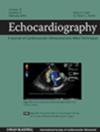Reference Ranges of Left Ventricular Global Longitudinal Strain by Contemporary Vendor-Neutral Echocardiography Software in Healthy Subjects
Abstract
Background
Left ventricular global longitudinal strain (LVGLS) by speckle-tracking transthoracic echocardiography (TTE) is an established measure of left ventricular systolic function with many clinical applications. Strain software has evolved to achieve vendor-neutrality in recent developments, although there is a notable absence of external validation studies. We assessed the normal ranges and associated factors of two-dimensional LVGLS quantification by TomTec, EchoPAC, VVI, and Epsilon contemporary strain software in a healthy cross-sectional cohort.
Methods
One hundred healthy subjects undergoing TTE during January–April 2023 at our institution were cross-sectionally recruited, 20 per age-group, 50% were female, and 50% had GE and 50% Philips scans. TomTec version 51.02 (Autostrain LV), EchoPAC version 206 (AFI-LV), VVI version (V.2.00-070730), and Epsilon (5.0.2.11295) were utilized to quantify two-dimensional LVGLS in all patients for comparative and regression analyses.
Results
Means and lower limits of normal (95% confidence intervals) of LVGLS were −17.1% (−17.5%, −16.7%) and −14.7% (−15.4%, −14.0%) for TomTec; −17.8% (−18.4%, −17.2%) and −14.4% (−15.3%, −13.5%) for EchoPAC; −16.3% (−16.9%, −15.7%) and −13.0% (−13.9%, −12.1%) for VVI; and −17.0% (−17.6%, −16.4%) and −12.8% (−13.8%, −11.8%) for Epsilon. Factors significantly associated with LVGLS measurements in multivariable regression analyses with their beta-coefficients (95% CI) were female −1.36 (−2.12, −0.59), heart rate (per 10 bpm) with a coefficient of 0.38 (0.10–0.66), left ventricular ejection fraction (per 10%) −1.03 (−1.72, −0.34), and EchoPAC (vs. TomTec) −0.62 (−1.2, 0.0), VVI (vs. TomTec) 0.82 (0.23, 1.41) and Epsilon (vs. TomTec) 0.13 (−0.45, 0.72).
Conclusion
LVGLS measurements were feasible across all four strain software on both GE and Philips scans in this study. Reference ranges to define normal, abnormal, and borderline LVGLS values along with associated factors in healthy patients are reported to enable clinical applications.


 求助内容:
求助内容: 应助结果提醒方式:
应助结果提醒方式:


